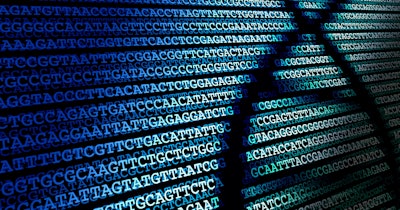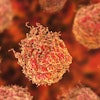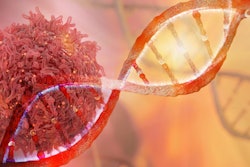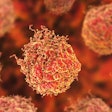
A gene expression-based molecular diagnostic assay may be able to assess proliferative and estrogen signaling pathways in breast cancer well enough to become a precision medicine tool for selecting patients for extended endocrine therapy (EET), according to an impact study published in March in the Journal of the National Comprehensive Cancer Network (JNCCN).
Lead author Dr. Tara Sanft of the Yale School of Medicine, along with contributors from the Hologic company Biotheranostics, described the Breast Cancer Index (BCI) test as validated and consisting of two components: the five-gene Molecular Grade Index (MGI) [five cell cycle-associate gene index: BUB1B, CENPA, NEK2, RACGAP1, RRM2] and two-gene ratio HOXB13 : IL17BR (H/I) biomarkers. Gene expression analysis of HOXB13 and IL-17BR is done by quantitative reverse transcription polymerase chain reaction (PCR).
The study pointed out that patients with hormone receptor (HR)-positive breast cancer who received EET had a modest 1% to 5% risk reduction in recurrence but experienced increased adverse events, such as bone and cardiovascular toxicities, endometrial cancer, and other side effects that impair their quality of life.
Therefore, to assess the test's impact on clinical decision-making regarding EET, an ongoing, prospective, large-scale, multicenter study began enrolling certain women starting in April 2021, according to the JNCCN article. The authors stated that enrollment will continue until at least 3,000 patients have been recruited, adding that the study protocol was amended in 2023 to include blood collection from patients at enrollment and during annual follow-up visits.
Early results showed the BCI test significantly influenced physician treatment recommendations and patient preferences for EET, wrote Sanft and collaborators.
"Notably, the results revealed that treatment recommendations by physicians for EET changed in >40% of patients informed by BCI," the authors wrote. Prior to BCI testing, 479 of the 843 patients (56.8%) were recommended to receive EET by the physician. Following BCI testing, physicians changed treatment recommendations in 40.1% (n=338) of patients.
"Most of the recommendation changes comprised patients who were recommended to stop EET after being considered for EET prior to BCI testing. Knowledge of the BCI results likely spared these patients from overtreatment and potentially serious adverse effects," stated the authors.
Those eligible for this BCI impact study were women diagnosed with stage 1-3 HR-positive breast cancer with available pretreatment tumor specimens who completed four to seven years of primary adjuvant endocrine therapy and remained recurrence-free. BCI testing was completed for 1,156 patients with available clinical information.
The BCI test report includes two separate components:
1. The prognostic piece provides an individual risk of late (five to 10 years) distant recurrence and a categorical risk group of either BCI low risk or high risk.
2. The predictive piece reports a categorical prediction of BCI (H/I)-high versus BCI (H/I)-low likelihood of benefit from EET.
"BCI might also have been useful for the group of patients recommended to continue EET due to BCI predicting EET benefit after being initially considered to forgo EET," the authors continued.
Authors of the article highlighted a "critical need for clinically validated biomarkers" to use in guiding patient selection for EET and underscored the importance of using both the prognostic and predictive BCI results to optimize endocrine therapy duration.
BCI is one of several gene expression profiling (GEP) tests that have been developed for molecular oncology that may be recognized by payers such as UnitedHealthcare and others.



















